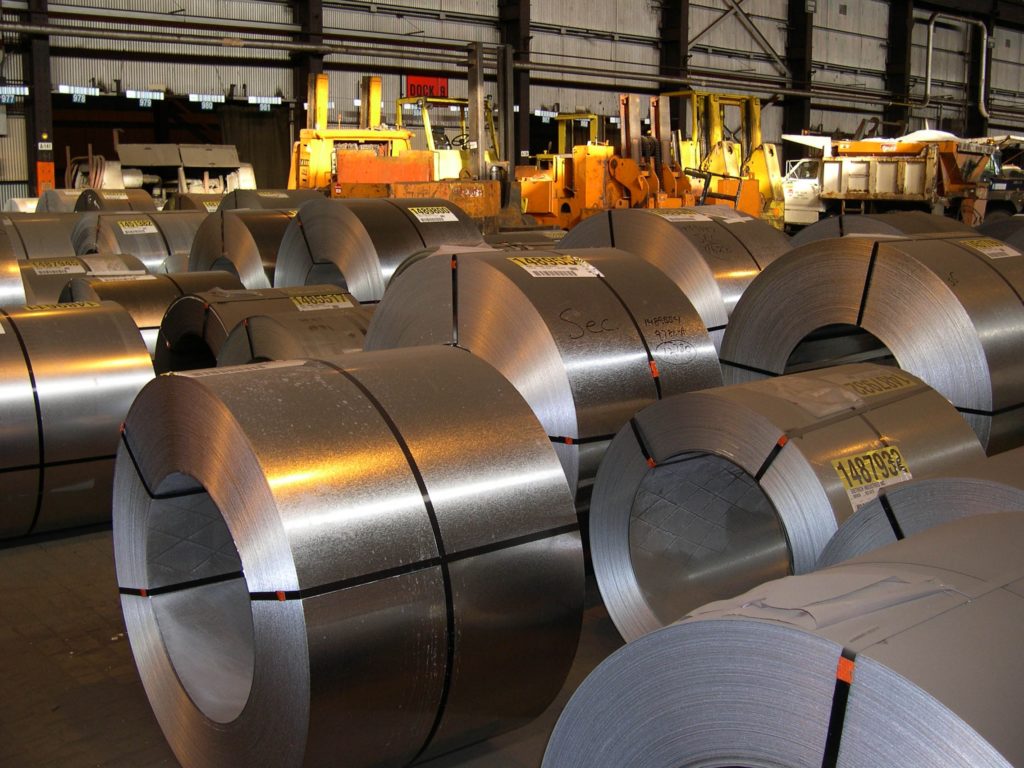
Reducing carbon emissions is essential for the future of our planet. It starts with buying American-made.
The Biden administration on Tuesday introduced a new initiative to “support American leadership on clean manufacturing,” aiming to reduce carbon emissions in the industrial sector, which currently produces about one-third of the nation’s greenhouse gases.
According to the White House, the plans announced Tuesday will help “create good-paying, union jobs across American manufacturing” by using “domestic procurement and global trade policy to reward clean, American-made materials.”
At the center of the plans is a new government task force that will work to ensure federal agencies abide by “Buy Clean” policies, purchasing construction materials “with lower embodied emissions and pollutants across their lifestyle—including each stage of the manufacturing process.”
Meanwhile, the Energy Department will invest $9.5 billion in efforts to encourage the production of clean hydrogen, which can assist in reducing carbon emissions for industrial sectors. In addition, the Council on Environmental Quality issued new guidance on Carbon Capture, Utilization, and Sequestration (CCUS), which involves capturing carbon pollution from sources like smokestacks or the air and then permanently storing it.
On the trade front, the White House said that the United States and European Union will work together to tackle global emissions, including by restricting “access to their markets for dirty steel and limit access to countries that dump steel in both markets, contributing to worldwide over-supply.”
There’s no doubt that American manufacturers, including in industrial sectors like steel and aluminum, must take steps to lower emissions. Many major companies already have ambitious plans to place to do just that; U.S. Steel is aiming to be carbon neutral by 2050, while Cleveland-Cliffs also has a sustainability plan in place.
Unions that represent industrial workers also back plans to reduce carbon emissions. Roxanne Brown, International Vice President at Large for the United Steelworkers (USW), co-authored an op-ed in The Hill on Tuesday in support of Buy Clean efforts, writing:
“‘Buy Clean’ would ensure the government spends public infrastructure funds on low-carbon materials, like steel manufactured by USW members, so that the nation slashes climate pollution and improves public health while creating good-paying jobs and rebuilding roads, repairing bridges, and investing in transit systems.”
While Buy Clean has major potential, it’s also critical that the government get the implementation right, and that starts with supporting American manufacturers and workers.
It’s important to remember that American workers have faced decades of flawed policy that encouraged offshoring. The trade deficit with China alone led to 3.7 million lost jobs between 2001 and 2018, for example.
That had a negative impact on the industrial sector. Take steel. Cheap steel from China and other nations flooded the American market for years, leading to layoffs and factory closures. American steelmakers struggled to stay afloat, making it harder to make needed investments to improve facilities.
While “Section 232” trade action helped level the playing field for American steel companies and workers, it didn’t solve the root of the problem, which is that China and other countries are still making too much steel. Not only is that steel heavily subsidized by China’s government — or in many cases, government-owned — it’s also dirty.
Indeed, China dominates global steel production, accounting for over half of the steel produced around the world. It’s a number that continues to rise; China managed to hit record highs for steel production in 2020, when much of the world’s production slowed down.
If China and other countries are once again allowed to flood the U.S. market with their cheap, dirty steel, U.S. steel factories will close. Rather than reduce emissions, the U.S. will find itself importing pollution, making the overall global emissions problem worse.
That’s why it’s vital that “Section 232” remain in place, and why the U.S. and allies like the European Union should work together to keep dirty steel out of their markets. At the same time, U.S. officials should never hesitate to enforce our trade laws. Doing so will help ensure that not only can American companies and workers compete, they’ll have the money and resources to make upgrades and enhancements at their facilities to further reduce emissions.
It’s also essential that as the federal government look to Buy Clean, it also Buys American.
Honestly, this should be a no brainer. The U.S. steel industry is already 75 to 320% more carbon efficient than global producers, depending on the product segment. And as mentioned above, steelmakers are hard at work finding ways to further reduce emissions. Federal investments should reward American companies and workers who already are doing the right thing by adopting cleaner practices, which will incentivize others to take action as well.
As Brown writes:
“America’s steel industry already ranks among the cleanest in the world, thanks to practices that manufacturers implemented with the support and skill of union workers. Continuing to upgrade U.S. factories so that manufacturers across the board can produce the cleanest industrial materials on the market must be part of a national climate agenda.”
Together, Buy Clean and Buy America policies can help ensure American manufacturers and workers are leading the way when it comes to reducing global greenhouse gas emissions and creating a better environment. Combined with strong trade enforcement, these policies will allow the United States to be able to build a cleaner and more efficient industrial sector.
Let’s get the job done, and let’s do it right.
